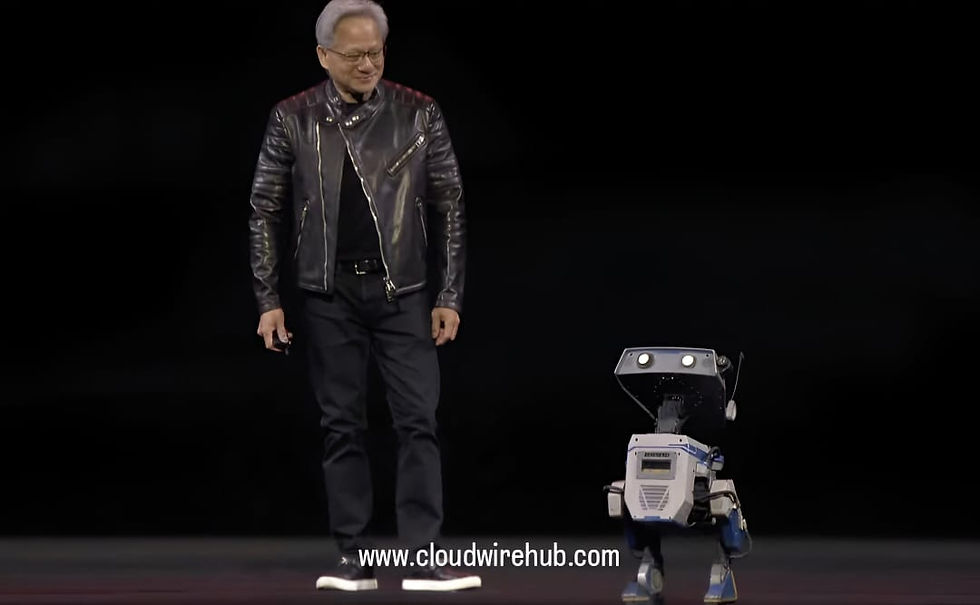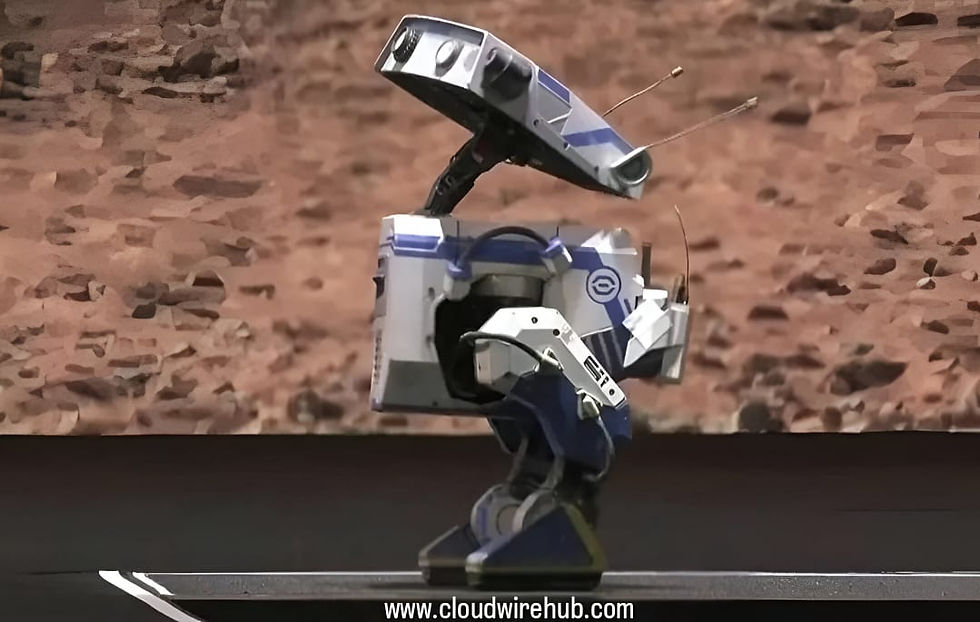NVIDIA’s AI Robot ‘Blue’: A Glimpse into the Future of Interactive Machines
- Shashank Mishra
- Mar 30
- 3 min read
Updated: May 8

Blue can respond to human gestures and voice commands in real-time using NVIDIA’s latest AI models.
At NVIDIA’s GTC 2025 conference, CEO Jensen Huang introduced "Blue," an AI-powered humanoid robot developed in collaboration with Disney Research and Google DeepMind. Drawing inspiration from a beloved "Star Wars" character, Blue showcased advanced real-time interaction capabilities, responding to Huang’s gestures and comments with fluid, human-like responses. This unveiling marks a major milestone in the convergence of AI, robotics, and entertainment technology.
The Vision Behind Blue: AI Meets Robotics
The development of Blue stems from the growing demand for intelligent, interactive robots capable of engaging with humans in a more intuitive manner. NVIDIA, known for its groundbreaking advancements in AI and GPU technology, partnered with Google DeepMind and Disney Research to bring this vision to life. Disney’s storytelling expertise, combined with DeepMind’s AI research and NVIDIA’s cutting-edge computing power, resulted in a humanoid robot designed to revolutionize how robots interact with humans and their environment.
Newton: The Powerhouse Behind Blue’s Intelligence

Developed with Google DeepMind and Disney Research, Newton enhances robotic learning for real-world interaction.
One of the key innovations enabling Blue’s capabilities is the Newton physics engine, an open-source simulation platform designed to enhance robotic learning. Developed jointly by NVIDIA, Google DeepMind, and Disney Research, Newton allows robots to process and predict real-world physics, significantly improving their ability to navigate and interact with their surroundings.
How Newton Works
Simulated Learning Environments: Newton enables Blue to train in high-fidelity simulated environments before interacting in real life.
Real-Time Adaptation: The engine helps robots adjust to dynamic environments, such as responding to unexpected movements or physical interactions.
Enhanced Dexterity: Blue can handle complex objects with improved precision, making it ideal for applications beyond entertainment, such as healthcare and customer service.
Blue’s Real-World Applications

Blue’s design and behavior are influenced by popular sci-fi droids to enhance engagement.
While Blue’s demonstration at GTC 2025 primarily focused on entertainment, its potential extends far beyond. Some key industries that could benefit from this AI-driven robotic technology include:
1. Entertainment & Theme Parks
Disney envisions integrating Blue and similar AI-powered robots into theme parks and live entertainment experiences. These robots could interact with guests in real time, providing immersive storytelling experiences that blend reality with fantasy.
2. Healthcare & Assistive Robotics
With AI-driven adaptability, robots like Blue could assist in elderly care, physical therapy, and rehabilitation. Their ability to learn and interact naturally with humans makes them ideal companions for individuals requiring personalized assistance.
3. Customer Service & Retail
AI robots could soon be employed in retail and hospitality to enhance customer interactions. Imagine walking into a store and being greeted by a humanoid robot that can answer questions, provide product recommendations, and even process transactions.
4. Education & Training
Interactive robots can revolutionize education by serving as AI tutors or virtual instructors, providing customized learning experiences to students of all ages.
The Future of AI Robotics: Challenges & Opportunities

Utilizes NVIDIA’s Isaac platform for precise and lifelike movements.
While the debut of Blue is an exciting milestone, there are still challenges to overcome in the development and deployment of AI-powered humanoid robots.
Challenges:
Ethical Considerations: The integration of AI robots into daily life raises questions about privacy, security, and human dependency on automation.
High Development Costs: Advanced robotics require significant computational power and R&D investment.
Public Acceptance: People may have mixed reactions to humanoid robots, especially when it comes to employment and social interactions.
Opportunities:
AI & Robotics Convergence: Advancements in machine learning and robotics will continue to drive innovation in multiple sectors.
Increased AI Personalization: Future AI robots may feature even greater customization, adapting their personalities and communication styles to fit individual user preferences.
Expansion Beyond Tech Companies: AI-powered robotics will see adoption in non-tech industries, including fashion, sports, and even creative arts.
Where to Place Images for Maximum Impact
To enhance engagement and visual storytelling, here are key points where images should be incorporated in the blog:
Introduction: An image of Blue alongside NVIDIA CEO Jensen Huang at the GTC 2025 unveiling.
Newton Physics Engine Section: A conceptual illustration showing how Newton enables robots to simulate real-world interactions.
Challenges & Opportunities: A futuristic visualization of AI-driven humanoid robots in everyday life.
Final Thoughts: A New Era of Interactive AI
NVIDIA’s unveiling of Blue at GTC 2025 represents a monumental step in the evolution of AI-powered robotics. By merging NVIDIA’s AI technology, Disney’s storytelling, and Google DeepMind’s advanced research, Blue showcases the potential of intelligent robots in entertainment, healthcare, education, and beyond.
As AI continues to evolve, projects like Blue serve as a reminder that the future of robotics is not just about automation it’s about creating meaningful, dynamic interactions that enhance human experiences. The era of AI-driven humanoid robots has arrived, and it’s only the beginning.



Comments